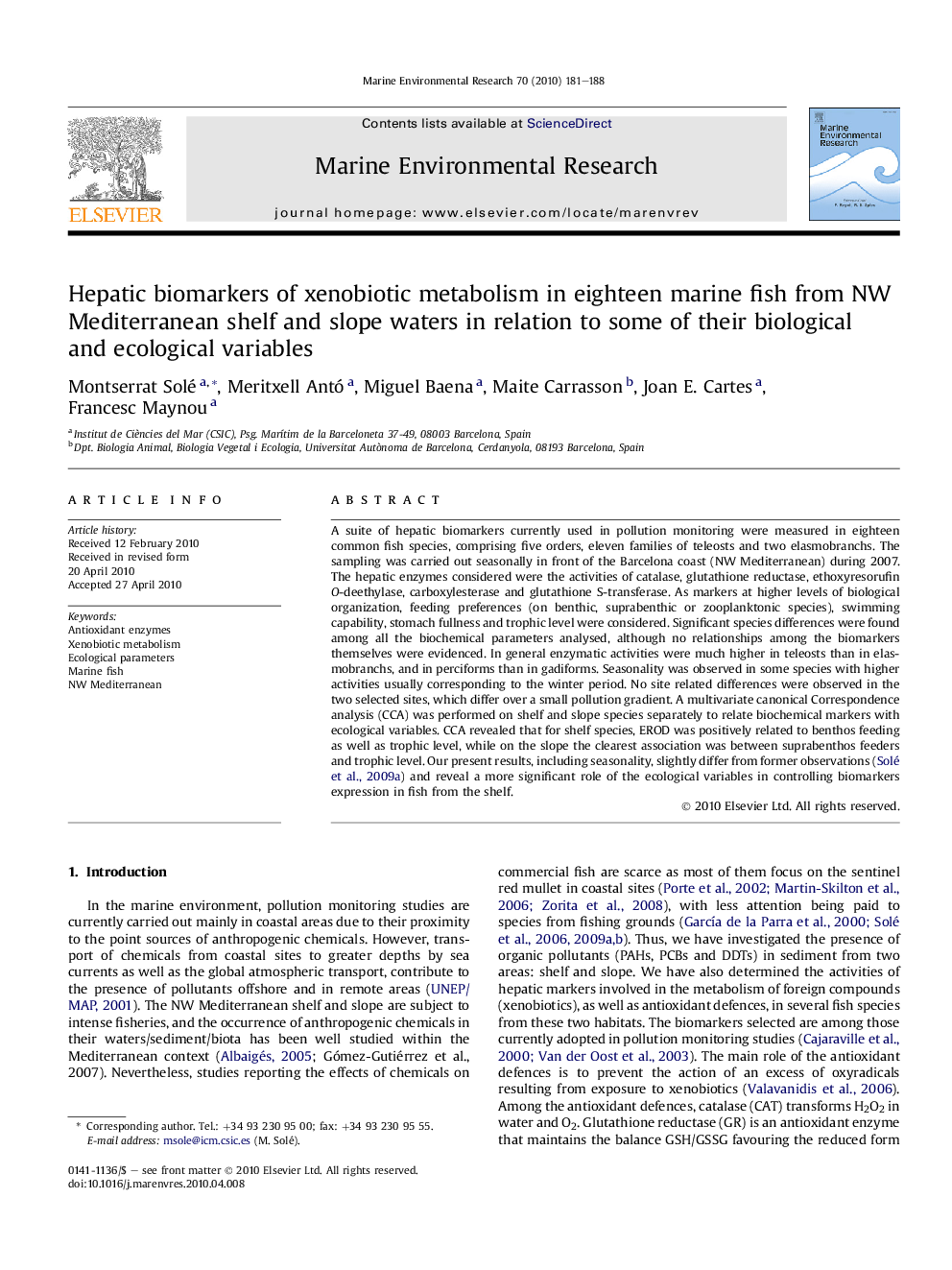| Article ID | Journal | Published Year | Pages | File Type |
|---|---|---|---|---|
| 4551236 | Marine Environmental Research | 2010 | 8 Pages |
A suite of hepatic biomarkers currently used in pollution monitoring were measured in eighteen common fish species, comprising five orders, eleven families of teleosts and two elasmobranchs. The sampling was carried out seasonally in front of the Barcelona coast (NW Mediterranean) during 2007. The hepatic enzymes considered were the activities of catalase, glutathione reductase, ethoxyresorufin O-deethylase, carboxylesterase and glutathione S-transferase. As markers at higher levels of biological organization, feeding preferences (on benthic, suprabenthic or zooplanktonic species), swimming capability, stomach fullness and trophic level were considered. Significant species differences were found among all the biochemical parameters analysed, although no relationships among the biomarkers themselves were evidenced. In general enzymatic activities were much higher in teleosts than in elasmobranchs, and in perciforms than in gadiforms. Seasonality was observed in some species with higher activities usually corresponding to the winter period. No site related differences were observed in the two selected sites, which differ over a small pollution gradient. A multivariate canonical Correspondence analysis (CCA) was performed on shelf and slope species separately to relate biochemical markers with ecological variables. CCA revealed that for shelf species, EROD was positively related to benthos feeding as well as trophic level, while on the slope the clearest association was between suprabenthos feeders and trophic level. Our present results, including seasonality, slightly differ from former observations ( Solé et al., 2009a) and reveal a more significant role of the ecological variables in controlling biomarkers expression in fish from the shelf.
